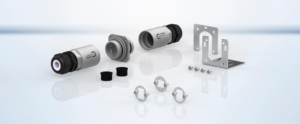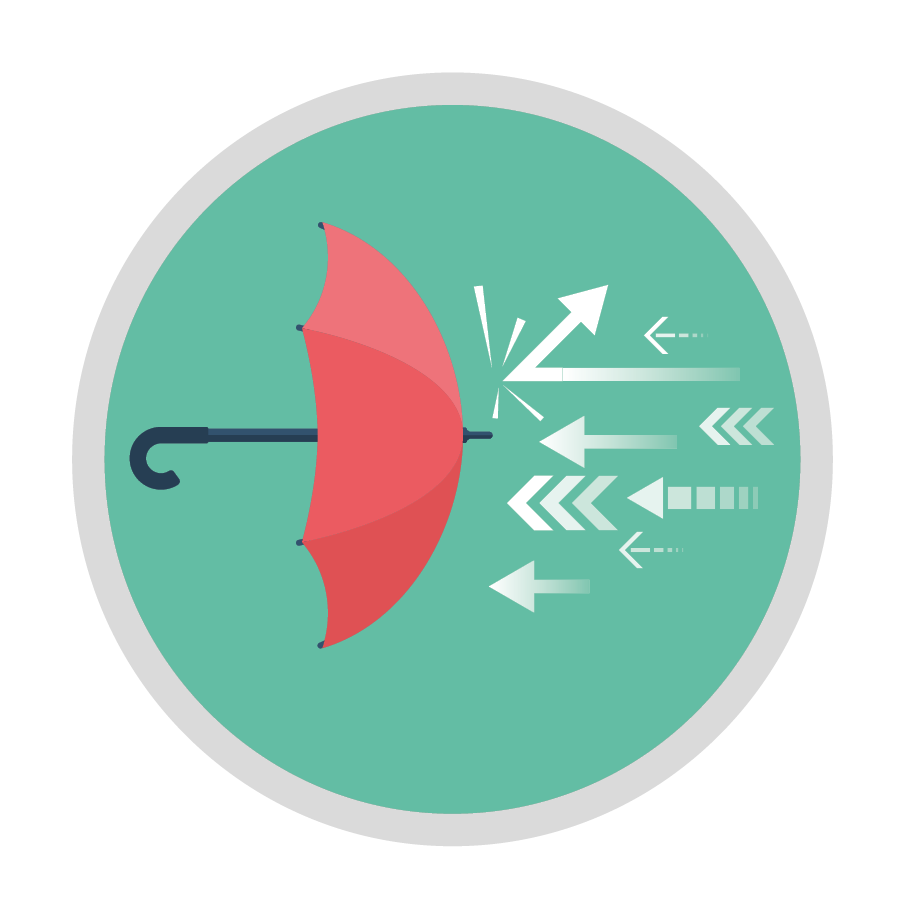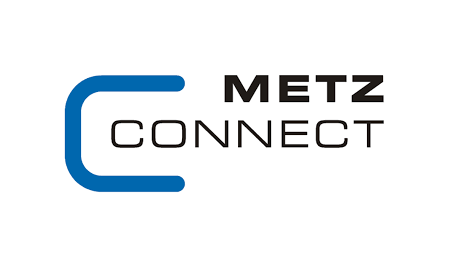METZ CONNECT – MCO IP69k – Protective housing for outdoor applications
 The demand for outdoor cabling solutions is growing inexorably.
The demand for outdoor cabling solutions is growing inexorably.
This is due to modern network and IP interface technologies, which are essential for digitalization. They enable the networking and deployment of surveillance cameras, sensors and digital traffic signs, as well as wireless access points.
METZ CONNECT Outdoor (MCO)
Our MCO IP69k protective housings provide reliable protection for your permanent outdoor connections. They are not only completely dust and waterproof, but also resistant to ozone, UV radiation and salt water. They also withstand high temperatures, strong vibrations and high-pressure jet cleaning, providing reliable protection against external interference. The flexible and easy-to-install solutions have been specially designed to accommodate and protect field-terminated cables, pre-terminated patch cables and fiber optic connections.

Flexible & reliable
Our universally applicable protective housings for outdoor applications are available in three different versions and cover all conceivable applications in your practice. The three variants of the protective housings have been specially designed for free installation, as well as for wall, top-hat rail, quick and pole mounting. In addition, we also offer a solution for wall or housing feed-through. Thanks to the adapter plates included in the scope of delivery, countless combination options are possible, with various modules, plug-in connectors and cable connectors. Regardless of whether it is a matter of accommodating and protecting field-assembled cables or pre-assembled patch cables and fiber optic connections.

Structure

Variants MCO IP69k
- MCO IP69k – Set for free installation
- MCO IP69k – Set with mounting bracket
- MCO IP69k – Wall and housing feed-through set
- MCO IP69k – Protective cover for flange
Application examples
- Mast Mounting
- Wall mounting
- DIN rail mounting
- Fast assembly
- Wall and housing feed-through
More information on the topic:
- Brochure “MCO IP69k – Protective housing for outdoor applications”
- Product Page
Source
METZ CONNECT GmbH
EMR Analysis
More information on Metz Connect: See the full profile on EMR Executive Services
More information on Jochen Metz (President and CEO, Metz Connect): See the full profile on EMR Executive Services
More information on MCO IP69k by Metz Connect: https://www.metz-connect.com/home/products/p-cabling/ip-protected-housings/protective-housings-for-outdoor-use.3c4.en.html +
MCO IP69k protective housing for outdoor use, set for exposed installation + MCO IP69k Protective housing for outdoor use,
set with mounting bracket + MCO IP69k Protective housing for outdoor use, set wall/ housing bushing + MCO IP69k protective cover for flange
More information on The German Institute for Standardization – Deutsche Institut fur Normung (DIN): https://www.din.de/en + DIN and its subsidiaries provide comprehensive services for national, European and international standards work. We offer our customers a global network and over 100 years’ experience.
DIN Standards are the results of work at national, European and/or international level. Anyone can submit a proposal for a new standard. Once accepted, the standards project is carried out according to set rules of procedure by the relevant DIN Standards Committee, the relevant Technical Committee of the European standards organization CEN (CENELEC for electrotechnical standards) or the relevant committee at the international standards organization ISO (IEC for electrotechnical projects).
All stakeholders can participate in this work, including manufacturers, consumers, businesses, research institutes, public authorities and testing bodies. They send experts to represent their interests within DIN’s working bodies, which are overseen by some 70 standards committees, each of which is responsible for a specific subject area. For work at European and international level, the DIN standards committees send experts to represent German interests within CEN and ISO, respectively. DIN staff members coordinate the standardization process and are responsible for overall project management, ensuring the uniformity and consistency of the German standards collection.
Standards are developed with full consensus, that is, they are developed by experts with the aim of arriving at a common standpoint, taking the state of the art into consideration.
DIN Standards are reviewed at least every five years. If a standard no longer reflects the current state of technology, it is either revised or withdrawn.
Standard DIN Rails are available in 35mm (7.5 and 15mm deep), 32mm and 15mm widths and are supplied in 1 m (3’3″) and 2 m (6’6”) lengths.
EMR Additional Notes:
- IP ratings (Ingress Protection):
- A two-digit number established by the International Electro Technical Commission, is used to provide an Ingress Protection rating to a piece of electronic equipment or to an enclosure for electronic equipment.
- The protection class after EN60529 are indicated by short symbols that consist of the two code letters IP and a code numeral for the amount of the protection.
- Example: IP65 (NEMA 4)
The two digits represent different forms of environmental influence:- The first digit represents protection against ingress of solid objects.
- The second digit represents protection against ingress of liquids.
- The larger the value of each digit, the greater the protection. As an example, a product rated IP54 would be better protected against environmental factors than another similar product rated as IP42.

- IP Communication:
- The Internet Protocol (IP) is defined as the protocol for sending data from one computer to another across the Internet, with each computer having at least one IP address that identifies it from all other computers on the Internet.
- MoIP, or mobile communications over internet protocol, is the mobilization of peer-to-peer communications including chat and talk using internet protocol via standard mobile communications applications including 3G, 4G, 5G, GPRS, Wi-Fi …
- Voice over Internet Protocol (VoIP), is a technology that allows you to make voice calls using a broadband Internet connection instead of a regular (or analog) phone line.
EMR Additional Notes on UV-(A,B &C): Source: https://www.fda.gov/radiation-emitting-products/tanning/ultraviolet-uv-radiation
- What is UV Radiation?
- All radiation is a form of energy, most of which is invisible to the human eye. UV radiation is only one form of radiation and it is measured on a scientific scale called the electromagnetic (EM) spectrum.
- UV radiation is only one type of EM energy you may be familiar with. Radio waves that transmit sound from a radio station’s tower to your stereo, or between cell phones; microwaves, like those that heat your food in a microwave oven; visible light that is emitted from the lights in your home; and X-rays like those used in hospital X-ray machines to capture images of the bones inside your body, are all forms of EM energy.
- UV radiation is the portion of the EM spectrum between X-rays and visible light.
- How is radiation classified on the electromagnetic spectrum?
- Electromagnetic radiation is all around us, though we can only see some of it. All EM radiation (also called EM energy) is made up of minute packets of energy or ‘particles,’ called photons, which travel in a wave-like pattern and move at the speed of light. The EM spectrum is divided into categories defined by a range of numbers. These ranges describe the activity level, or how energetic the photons are, and the size of the wavelength in each category.

-
- For example, at the bottom of the spectrum radio waves have photons with low energies, so their wavelengths are long with peaks that are far apart. The photons of microwaves have higher energies, followed by infrared waves, UV rays, and X-rays. At the top of the spectrum, gamma rays have photons with very high energies and short wavelengths with peaks that are close together.
- What are the different types of UV radiation?
- The most common form of UV radiation is sunlight, which produces three main types of UV rays:
- UVA
- UVB
- UVC
- UVA rays have the longest wavelengths, followed by UVB, and UVC rays which have the shortest wavelengths. While UVA and UVB rays are transmitted through the atmosphere, all UVC and some UVB rays are absorbed by the Earth’s ozone layer. So, most of the UV rays you come in contact with are UVA with a small amount of UVB.
- Like all forms of light on the EM spectrum, UV radiation is classified by wavelength. Wavelength describes the distance between the peaks in a series of waves.
- UVB rays have a short wavelength that reaches the outer layer of your skin (the epidermis)
- UVA rays have a longer wavelength that can penetrate the middle layer of your skin (the dermis)
- The most common form of UV radiation is sunlight, which produces three main types of UV rays:
- What is UVC Radiation?
- UVC radiation is the highest energy portion of the UV radiation spectrum.
- UVC radiation from the sun does not reach the earth’s surface because it is blocked by the ozone layer in the atmosphere. Thus, the only way that humans can be exposed to UVC radiation is from an artificial source like a lamp or laser.
- What are the risks of exposure to UVC radiation?
- UVC radiation can cause severe burns of the skin and eye injuries (photokeratitis). Avoid direct skin exposure to UVC radiation and never look directly into a UVC light source, even briefly. Skin burns and eye injuries from UVC exposure usually resolve within a week with no known long-term damage. Since the penetration depth of UVC radiation is very low, the risk of skin cancer, cataracts or permanent vision loss is also thought to be very low. The type of eye injury associated with exposure to UVC causes severe pain and a feeling of having sand in the eyes. Sometimes people are unable to use their eyes for one to two days. It can occur after a very short exposure (seconds to minutes) to UVC radiation.
- What are the risks associated with using some UVC lamps?
- Some UVC lamps emit small amounts of UVB radiation. Therefore, exposure to a high dose or prolonged low dose of radiation from some UVC lamps can potentially contribute to effects like cataracts or skin cancer that are caused by cumulative exposure to UVB radiation.
- Additionally, some UVC lamps generate ozone which could cause irritation to breathing passages (that is nose, throat, and lungs), particularly for those who have respiratory sensitivity such as asthma or allergies. Exposure to high levels of ozone gas may also worsen chronic respiratory diseases, such as asthma, or increase vulnerability to respiratory infection.
- What effect does UV radiation have on my body?
- Both UVA and UVB rays can cause damage to your skin. Sunburn is a sign of short-term overexposure, while premature aging and skin cancer are side effects of prolonged UV exposure.
- Certain oral and topical medicines, such as antibiotics, birth control pills, and benzoyl peroxide products, as well as some cosmetics, may increase skin and eye sensitivity to UV in all skin types. Check the label and ask your doctor for more information.
- Sunlight is not the only source of UV radiation you may encounter. Other sources include:
- Tanning booths
- Mercury vapor lighting (often found in stadiums and school gyms)
- Some halogen, fluorescent, and incandescent lights
- Some types of lasers
- Can UVC lamps inactivate the SARS-CoV-2 coronavirus?
- UVC radiation is a known disinfectant for air, water, and nonporous surfaces. UVC radiation has effectively been used for decades to reduce the spread of bacteria, such as tuberculosis. For this reason, UVC lamps are often called “germicidal” lamps.
- UVC radiation has been shown to destroy the outer protein coating of the SARS-Coronavirus, which is a different virus from the current SARS-CoV-2 virus. The destruction ultimately leads to inactivation of the virus. (see Far-UVC light (222 nm) efficiently and safely inactivates airborne human coronavirusesExternal Link Disclaimer). UVC radiation may also be effective in inactivating the SARS-CoV-2 virus, which is the virus that causes the Coronavirus Disease 2019 (COVID-19). For more information see “Q: Where can I read more about UV radiation and disinfection?”. However, currently there is limited published data about the wavelength, dose, and duration of UVC radiation required to inactivate the SARS-CoV-2 virus.
- In addition to understanding whether UVC radiation is effective at inactivating a particular virus, there are also limitations to how effective UVC radiation can be at inactivating viruses, generally.
- Direct exposure: UVC radiation can only inactivate a virus if the virus is directly exposed to the radiation. Therefore, the inactivation of viruses on surfaces may not be effective due to blocking of the UV radiation by soil, such as dust, or other contaminants such as bodily fluids.
- Dose and duration: Many of the UVC lamps sold for home use are of low dose, so it may take longer exposure to a given surface area to potentially provide effective inactivation of a bacteria or virus.
- UVC radiation is commonly used inside air ducts to disinfect the air. This is the safest way to employ UVC radiation because direct UVC exposure to human skin or eyes may cause injuries, and installation of UVC within an air duct is less likely to cause exposure to skin and eyes.
- There have been reports of skin and eye burns resulting from improper installation of UVC lamps in rooms that humans can occupy.

